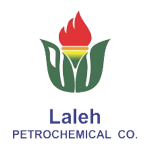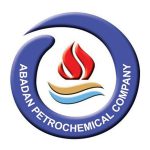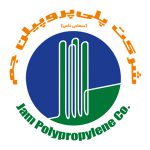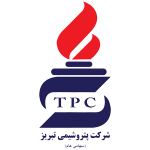TEA %85
TEA (Triethanolamine)
Triethanolamine or TEOA, with the chemical formula C6H15NO3, is an organic compound from the amine family, which possesses unique properties due to having three hydroxyl groups in its molecule. The density of this organic substance is 1.124 gr/cm3, and its molecular weight is 149.19 gr/mol. It is a viscous, colorless liquid with an odor similar to that of ammonia.
Triethanolamine is used in various industries as an additive in the production of diverse products, including detergents, cosmetics, and toiletries, as well as an acid neutralizer and carbon dioxide absorbent in petrochemical and gas industries.
Additionally, due to its emulsifying, moisturizing, and viscosity-increasing properties, it has a wide range of applications in different industries. However, its use should be handled with care as it may have irritating effects on the skin and eyes.
Exporting Triethanolamine to various countries with the best price has been one of the achievements of Petro Nour Mehr Company in recent years.
For more accurate information regarding prices or purchasing the product, it is better to contact the sales department of Petro Nour Mehr Company.
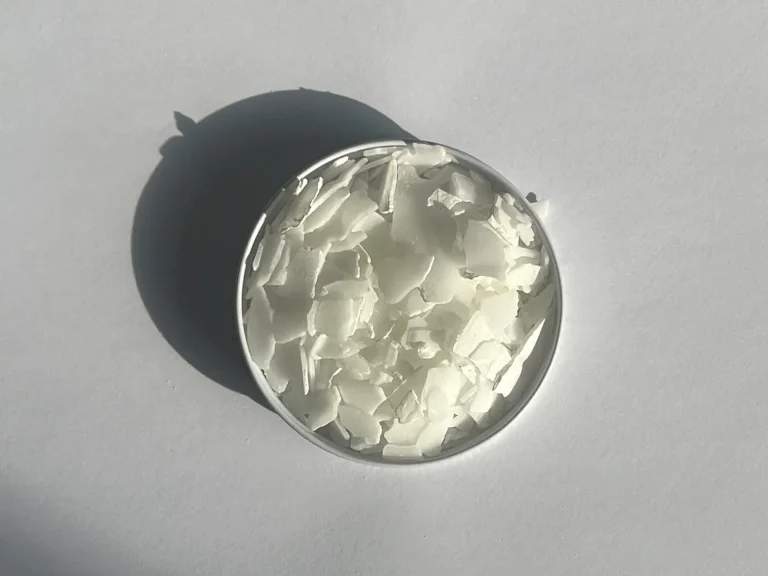
Triethanolamine Manufacturers in Iran
Shazand Arak Petrochemical and other domestic factories are producers of this chemical material in Iran.
These units are among the largest Triethanolamine producers in Iran and play a significant role in supplying domestic needs and exporting this material to global markets.
Triethanolamine Manufacturers Worldwide
Triethanolamine (TEA) is manufactured by several companies worldwide, with some of the major manufacturers including BASF, Dow Chemical Company, Huntsman Corporation. These companies produce TEA as part of their chemical manufacturing operations and supply it to various industries for use in products such as personal care items, cosmetics, detergents, pharmaceuticals, and more.
Additionally, other companies may be active in Triethanolamine production or use it as an intermediate substance in manufacturing processes across the globe.
Applications of TEA
Triethanolamine (TEA) finds applications across various industries due to its versatile properties. Some common applications include:
- Cosmetics and Personal Care Products: TEA is used in cosmetics and personal care products such as creams, lotions, shampoos, and soaps as an emulsifier, pH adjuster, and thickening agent.

- Pharmaceuticals: In the pharmaceutical industry, TEA is utilized as an intermediate in the synthesis of various drugs and as an emulsifying agent in ointments and creams.

- Textiles: TEA is employed in textile processing as a leveling agent and softener, aiding in dyeing and finishing processes.

- Concrete Additives: TEA is used as a cement grinding aid and concrete admixture to improve the workability, strength, and durability of concrete.

- Metalworking Fluids: TEA serves as a corrosion inhibitor and pH stabilizer in metalworking fluids used for cutting, grinding, and machining operations.
- Detergents and Cleaning Products: TEA is incorporated into detergents, liquid soaps, and cleaning agents to enhance foaming properties, emulsification, and pH adjustment.
- Pesticides and Herbicides: TEA is utilized in the formulation of agricultural chemicals as a solvent and emulsifier to improve the effectiveness and stability of pesticides and herbicides.
- Adhesives and Sealants: TEA is used in the formulation of adhesives and sealants to improve their adhesive properties and flexibility.
- Gas Treatment: TEA is employed in gas treating processes to remove acidic impurities such as carbon dioxide and hydrogen sulfide from natural gas and refinery gases.
- Chemistry: In analytical chemistry, triethanolamine can be used as a stationary phase in gas-liquid chromatography. It is important to note that the maximum temperature is 75 , and the solvent is methanol and ethanol, which are used to separate pyridine and methyl substitutes. In complexometric titration and other analyses, it can be used as a masking agent for interfering ions. For example, in a pH = 10 solution, when EDTA is used to titrate ions such as magnesium, zinc, cadmium, calcium, nickel, and others, it can be used as a masking agent for titanium, aluminum, iron, lead, and some others. Additionally, it can be converted into a buffer solution with a specific pH by adding hydrochloric acid.
- Other Industrial Applications: TEA finds use in various other industrial processes, including rubber processing, photography, and as a corrosion inhibitor in cooling water systems.
Storage Conditions for Triethanolamine
Keep the material in the anhydrous state to prevent severe corrosion to the carbon steel or aluminum tank and related equipment. For longer term color stability, it is recommended that the product be stored under an inert atmosphere. Ethanolamine products have 24 months of shelf-life time under unopened drum. The product should be re-evaluated after 24 months to reconfirm the product quality, if properly stored and protected from contamination. For storage conditions, Product is hygroscopic, water contamination should be avoided. Keep container tightly closed without air contamination. The periods of exposure to high temperatures should be minimized. Avoid directly contact with sunlight and higher temperature.
Packaging for Triethanolamine
Triethanolamine (TEA) is commonly packaged and stored in various types of containers depending on its intended use and the quantity required. Some typical packaging options include:
- Plastic or metal drums: TEA is often packaged in large plastic or metal drums with capacities ranging from 25 liters to several hundred liters. These drums are suitable for bulk storage and transportation.
- Intermediate bulk containers (IBCs): TEA may also be stored in IBCs, which are large, reusable containers typically made of plastic or metal and mounted on a pallet for easy handling.
- Plastic bottles or jerry cans: For smaller quantities, TEA can be packaged in plastic bottles or jerry cans ranging from 1 liter to 20 liters. These containers are suitable for laboratory use or small-scale applications.
- Glass bottles: In some cases, TEA may be packaged in glass bottles for specific laboratory or pharmaceutical applications where inert packaging materials are required.
Because of high freezing point of product, steel drum without coating liner (SDNC) is available since it is a particular packaging used for thawing requirement in cold weather country or winter season. Therefore, user should assume product quality concerns of coloration and deterioration.
The product in SDNC should be short term storage. For drum thawing recommendation, the unfreezing should be done by storage in hot room with temperature range of 30-40 . In another way, the drums are heated by hot water or electric heating coils. But the epoxy-phenolic liner in drums may be degraded by long-term external strap heating, resulting in effect of product quality. Drums must be vented while it is heated to prevent the pressure buildup for safety concern.
Advantages and Disadvantages of Triethanolamine
Triethanolamine, being an organic chemical compound, is utilized in the production of pesticides, detergents, chemicals, polymers, and more. Its advantages include its reasonable price, limited side effects, abundant production, and availability. In the manufacturing of cosmetic and detergent products, there are various acidic and alkaline compounds present. Ethanolamine is used to neutralize the acidic and basic properties. Additionally, it is used in regulating the pH of these compounds.
Another advantage of using triethanolamine is its thickening property, which finds application in the production of cosmetic and hygiene creams. Moreover, its stabilizing property ensures that the compounds in a solution maintain their structure and stability when combined with other substances.
Alongside these advantages, like all chemical substances, triethanolamine also has its disadvantages. Among these, the possibility of causing sensitivity or acne can be mentioned.
This is a drawback shared with other compounds such as benzophenone, petrolatum, parabens, etc., which cannot be eliminated from the formulation of detergents, sunscreen creams, medicinal ointments, cleaning agents, etc. Therefore, it is necessary to address this issue by using an appropriate dosage. According to extensive research, the appropriate dosage of triethanolamine is less than 5%.
Physical and Chemical Properties of Triethanolamine:
Triethanolamine exhibits multiple physical and chemical properties, some of which are highlighted below:
- Pure TEA is an oily liquid at room temperature, colorless, and transparent.
- Triethanolamine is available in two commercial grades: commercial and pure. Commercial samples typically have a slight yellowish tint due to impurities.
- The liquid form of triethanolamine has a faint ammonia odor and is hygroscopic.
- Generally, all Ethanolamines, including TEA, absorb water and carbon dioxide from the air and are insoluble in water or alcohol to any significant extent.
- Triethanolamine is insoluble in acetone, chloroform, but soluble in benzene (4.2%), ether (1.6%), and carbon tetrachloride (0.4%) at 25 degrees Celsius.
- Triethanolamine contains amine and hydroxyl groups, possessing both amine and alcohol properties. It reacts with acids to form salts and its hydroxyl groups are capable of ester bond formation.
Types of Triethanolamine grades:
Triethanolamine (TEA) is available in various forms, including 85% triethanolamine, 99% triethanolamine, and 70% triethanolamine. These percentages indicate the purity of the compound.
- 99% triethanolamine is a highly pure form that is typically used in pharmaceutical and cosmetic applications where precise quality standards are necessary.
- 85% triethanolamine is slightly less concentrated but is still widely used in industries such as detergents, metalworking fluids, and textiles.
- 70% triethanolamine, commonly used in concrete additives, indicates a lower concentration but still maintains its effectiveness in specific applications.
The choice of type depends on the intended use. Higher purity grades are preferred for industries requiring strict quality control, while lower concentrations may suffice for applications where lower purity levels are acceptable.
How to Buy Polyethylene?
- Buy from a reputable and authorized supplier that holds necessary certifications and guarantees quality.
- Compare the prices of these materials in different markets and compare them with the global market price.
- Examine the sales conditions regarding quantity, delivery time, packaging, transportation methods, and payment terms.
- If you intend to import polystyrene from foreign countries, investigate customs and legal regulations and comply with export and import regulations.
- Contact bravopolymer to obtain the most suitable export price based on your conditions.
- After signing the contract, you can place your order.
- Secure and suitable payment methods according to customer preferences are provided by the company.
- Then, the loading stage is completed by selecting and introducing a transport company.
- Necessary documents for customs clearance at the destination city are also provided to customers by bravopolymer.
The largest distributor of polymers in the Middle East



